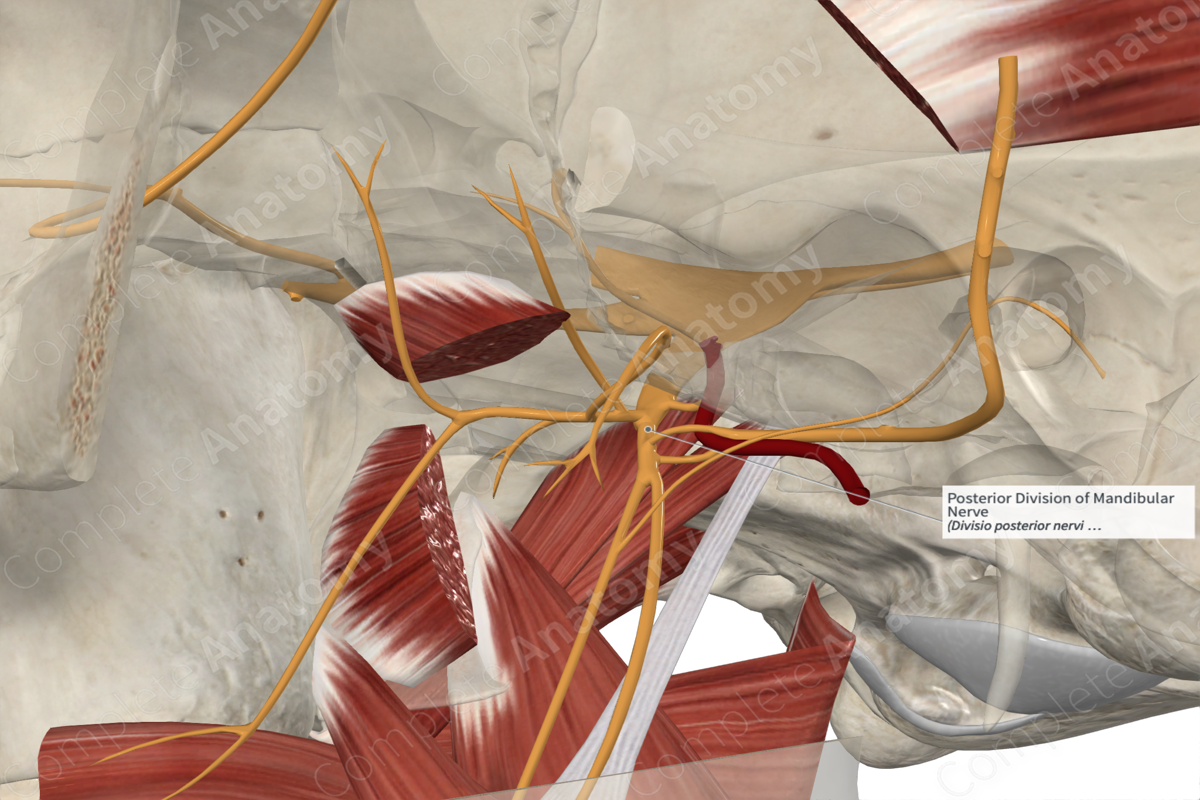
Quick Facts
Origin: Mandibular nerve.
Course: Runs inferiorly, deep to the lateral pterygoid muscle, a short distance before splitting.
Branches: Auriculotemporal, lingual, and inferior alveolar nerve.
Supply: Sensory: conveys general sense information from the skin of the ear, lower lip, and chin, mucosa of the lower lip and oral cavity, temporomandibular joint, anterior two thirds of the tongue, and teeth of the mandible; Motor: innervation of the mylohyoid and anterior digastric muscles.
Related parts of the anatomy
Origin
The posterior division of the mandibular nerve is the larger posterior bifurcation of the main mandibular nerve trunk, slightly below the level of the foramen ovale.
Its motor fibers have cell bodies located in the pons in the motor nucleus of the trigeminal nerve. Its sensory fibers have cell bodies located in the trigeminal ganglion.
Course
The posterior division of the mandibular nerve runs inferiorly, deep to the lateral pterygoid muscle. It quickly splits, giving off branches that head to their different targets.
Branches
The posterior division of the mandibular nerve gives rise to three major branches:
—auriculotemporal nerve;
—lingual nerve;
—inferior alveolar nerve.
Supplied Structures
The posterior division of the mandibular nerve is a mixed sensory and motor nerve.
The auriculotemporal nerve conveys general sense fibers from the skin of the posterior temple, anterior ear, and external acoustic meatus, tympanic membrane, and the posterior temporomandibular joint capsule. Parasympathetic fibers from the glossopharyngeal nerve and otic ganglion travel with the auriculotemporal nerve on their way to the parotid gland.
The lingual nerve conveys general sense fibers from the anterior two thirds of the tongue and much of the oral floor mucosa. It is also the nerve that parasympathetic and special sense taste fibers from the chorda tympani travel with to reach the oral cavity.
The inferior alveolar nerve conveys general sense fibers from the skin of the chin and lower lip, and all the teeth of the mandible. It also briefly carries the motor fibers of the nerve to mylohyoid muscle, which innervates the mylohyoid and anterior digastric muscles.
Learn more about this topic from other Elsevier products




